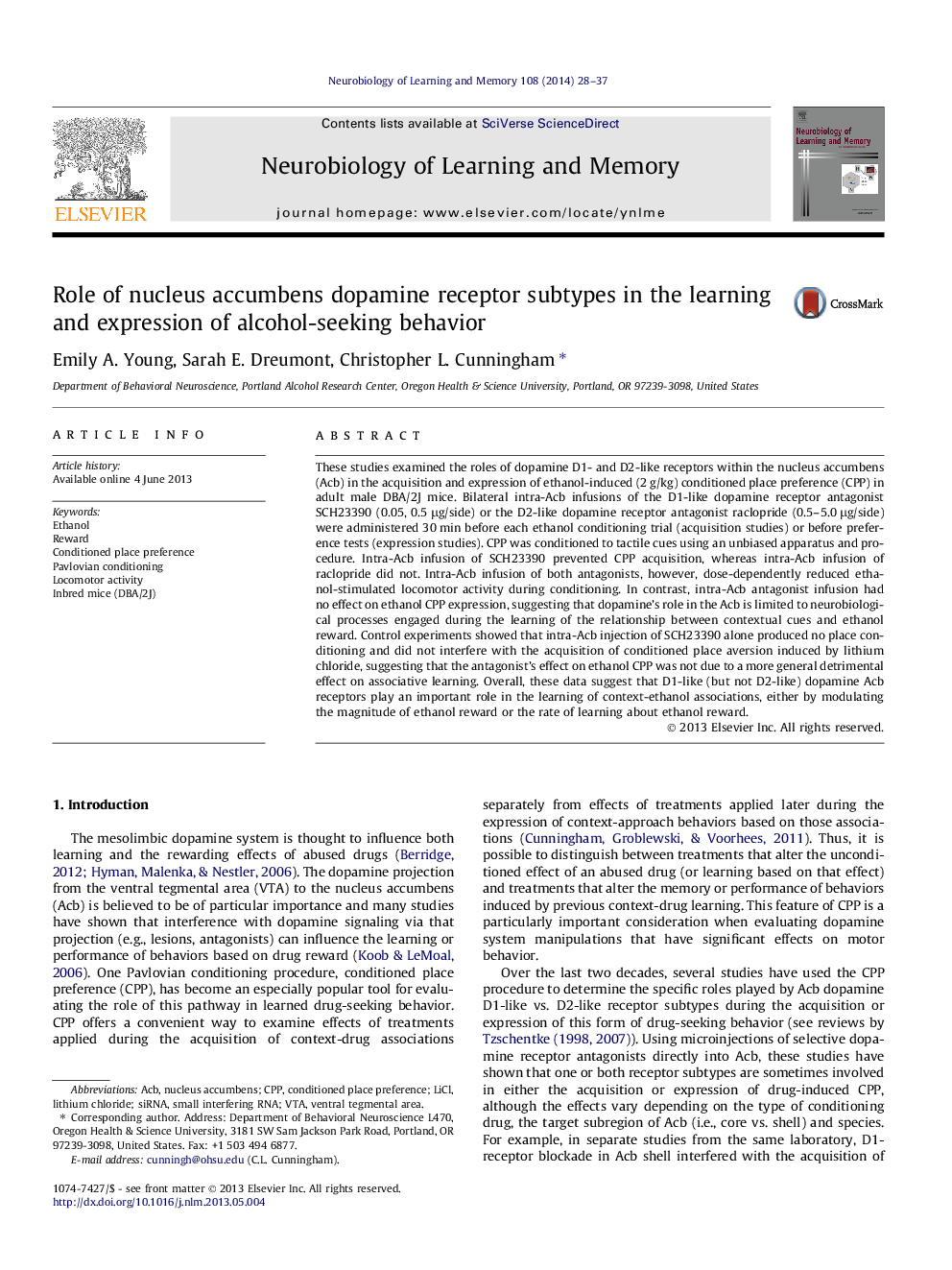| Article ID | Journal | Published Year | Pages | File Type |
|---|---|---|---|---|
| 936560 | Neurobiology of Learning and Memory | 2014 | 10 Pages |
•Ethanol was used to establish conditioned place preference (CPP) in mice.•Selective dopamine receptor antagonists were infused into the nucleus accumbens.•CPP acquisition was reduced by the D1- but not by the D2-receptor antagonist.•Neither antagonist affected CPP expression, but both reduced activity.•D1 receptors in accumbens influence learning of context-ethanol associations.
These studies examined the roles of dopamine D1- and D2-like receptors within the nucleus accumbens (Acb) in the acquisition and expression of ethanol-induced (2 g/kg) conditioned place preference (CPP) in adult male DBA/2J mice. Bilateral intra-Acb infusions of the D1-like dopamine receptor antagonist SCH23390 (0.05, 0.5 μg/side) or the D2-like dopamine receptor antagonist raclopride (0.5–5.0 μg/side) were administered 30 min before each ethanol conditioning trial (acquisition studies) or before preference tests (expression studies). CPP was conditioned to tactile cues using an unbiased apparatus and procedure. Intra-Acb infusion of SCH23390 prevented CPP acquisition, whereas intra-Acb infusion of raclopride did not. Intra-Acb infusion of both antagonists, however, dose-dependently reduced ethanol-stimulated locomotor activity during conditioning. In contrast, intra-Acb antagonist infusion had no effect on ethanol CPP expression, suggesting that dopamine’s role in the Acb is limited to neurobiological processes engaged during the learning of the relationship between contextual cues and ethanol reward. Control experiments showed that intra-Acb injection of SCH23390 alone produced no place conditioning and did not interfere with the acquisition of conditioned place aversion induced by lithium chloride, suggesting that the antagonist’s effect on ethanol CPP was not due to a more general detrimental effect on associative learning. Overall, these data suggest that D1-like (but not D2-like) dopamine Acb receptors play an important role in the learning of context-ethanol associations, either by modulating the magnitude of ethanol reward or the rate of learning about ethanol reward.
